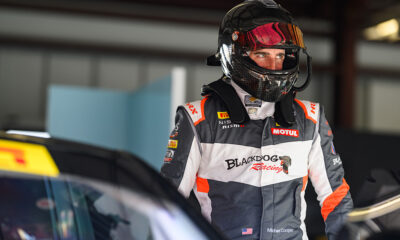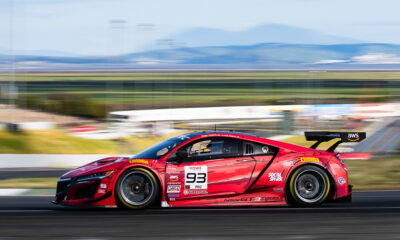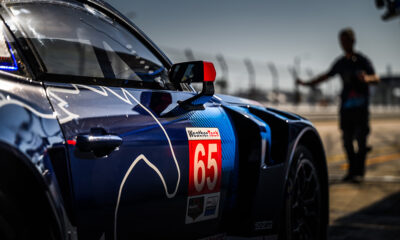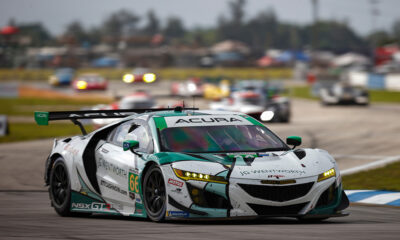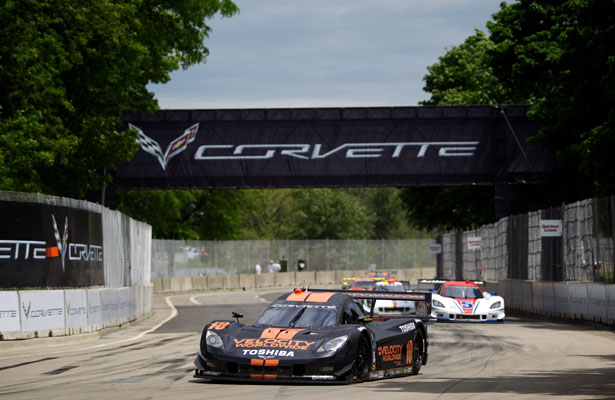
Photo: John Dagys
The merging of GRAND-AM and the American Le Mans Series to form the TUDOR United SportsCar Championship has been much more than just simply combining the two grids, creating a common set of technical and sporting regulations and releasing a unified schedule.
For IMSA’s marketing team, led by David Pettit, much of the focus over the last year and a half has been on aligning and strengthening relationships with existing partners from both series. Central to that has been the car manufacturers.
With GRAND-AM and the ALMS having taken different approaches in OEM involvement over the years, Pettit, who joined the NASCAR-owned series in 2009, has been a driving force in helping blend the two previously distinct philosophies together.
“Going back historically, ALMS has been a lot more OEM-friendly than the GRAND-AM side of it has been,” Pettit explains. “GRAND-AM has been more of a customer car program and more directed towards the teams than the OEM side of it.
“GRAND-AM was [recently] shifting towards the OEM relationships side of it, heading more towards the ALMS model. The car count was a concern in the ALMS a couple of years ago, so they opened up their classes for a reason.
“Both of the [series’] philosophies were coming closer together and I think that was really critical to the merger as well.”
One of the key changes for 2014, Pettit says, comes with manufacturers’ commitments to the series.
In order to be eligible for the manufacturer’s championship, automakers will be required to make monetary and marketing commitments. The marketing support could be used for their interests in the TUDOR Championship, Continental Tire SportsCar Championship, or both series.
“In either case, there’s obligations with respect to at-track spends, digital spends, TV spends and commitments to our partner FOX Sports, in order for that to qualify,” Pettit says. “These are obligations that are being taken seriously on our side and it’s a point-of-entry for them to be partners with us.
“There may be some manufacturers, and some that have approached us that want to come with us. But if they’re not willing to help us lift the series together… they wouldn’t be allowed a lot of the same benefits that the official partners would be. We’re not excluding them 100 percent, we’re making it a little bit more restrictive.”
While both series previously encouraged marketing spends, Pettit says a formalized system has now been put into place that’s tied around involvement in the manufacturers’ championship. Essentially, a manufacturer that’s not willing to make the investment to help promote the series, will not reap the same benefits of those that do.
Pettit would not disclose exact financial expectations, but it’s believed a seven-figure marketing commitment is required for small, ‘boutique’ manufacturers, with a potentially larger amount for medium-sized or top-level automakers that are committed to the championship.
Additionally, a nominal investment is required in order to be eligible for the manufacturers’ championships, which will be contested in the Prototype, GT Le Mans and GT Daytona classes.
A similar system is used in the FIA World Endurance Championship, which has a $415,000 entry fee for LMP1 manufacturers and $135,000 requirement for the GTE manufacturers championship. Manufacturer entry fees for the TUDOR Championship have not been disclosed.
“If you look at it, there’s only so much room for so many manufacturers as well,” Pettit says. “At some point in time, if you have too many manufacturers in a class, somebody’s not going to have a podium or even a win in the season. And they’re all there to win.
“The nice thing about the various classes we have is that there’s enough room for manufacturers to come in there, establish themselves, be competitive and then decide what they want to do from a marketing platform.
“We see it as a marketing platform and optimistically expect that they will leverage that and are doing everything we can to make it happen.”
Pettit says they have close to ten manufacturers already signed up, primarily consisting of existing official partners from GRAND-AM and/or the ALMS. However, they’ve also received considerable interest from automakers with FIA GT3-spec cars, which with modification, can be made eligible for GTD competition.
“It’s very important we have [manufacturers’] support,” Pettit says. “Honestly, sports car racing is really a manufacturer series. It’s about their product, because it’s endemic to the sport and being on track. They have as much to gain, if not more, than we do. What we do is aggregate those brands in one central place and create a showcase to draw fans in.”
With IMSA’s new system of enforcing marketing spends, whether it be for television broadcasts, at-track promotions or digital and print advertising, Pettit sees an opportunity to help grow the sport, something that had been particularly lacking in the past decade with two series fighting for the same real estate.
Now with a unified series, and an increased level of support from the automakers, sports car racing in the U.S. could be ready to re-enter the big times, if all of the key ingredients are made.


















